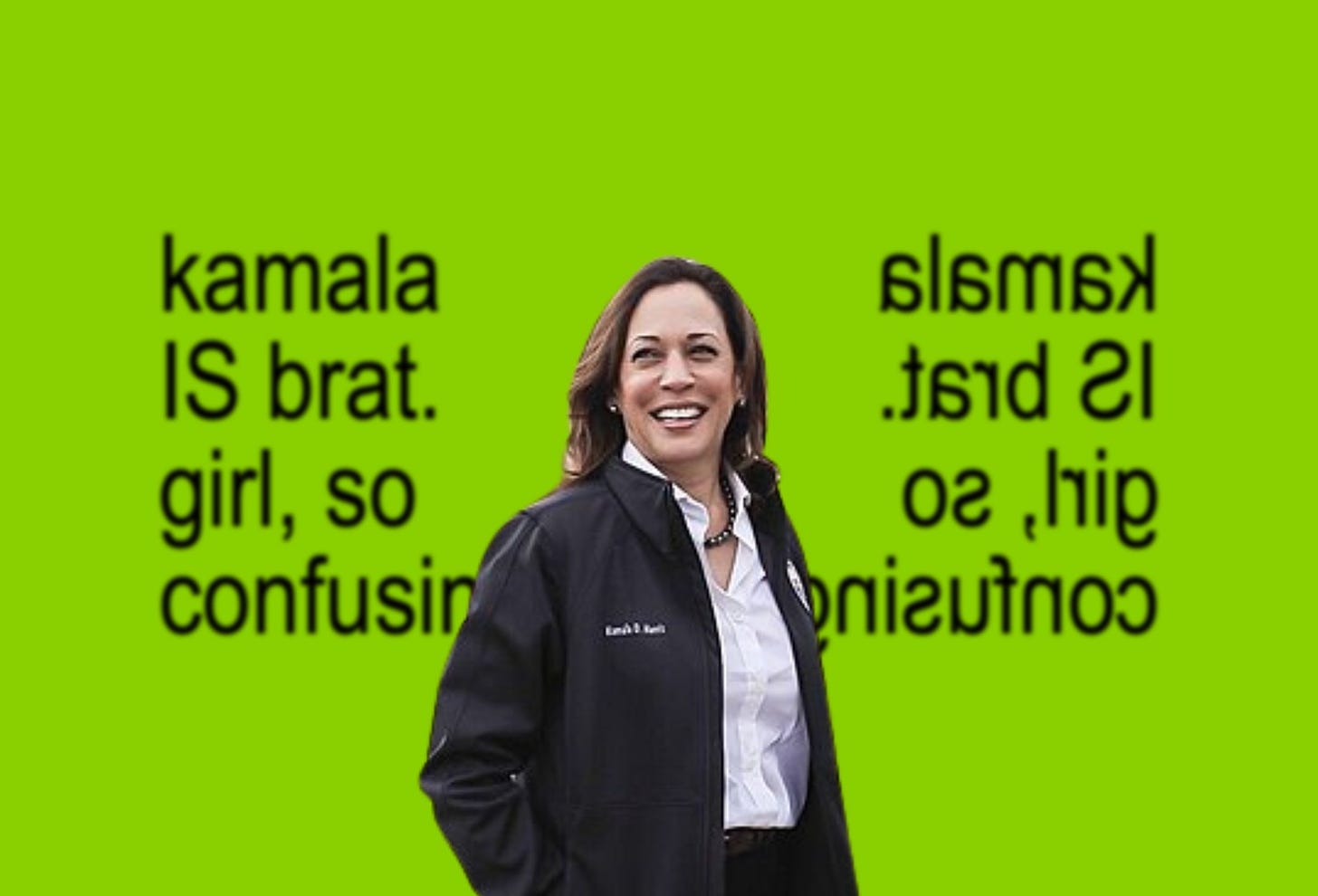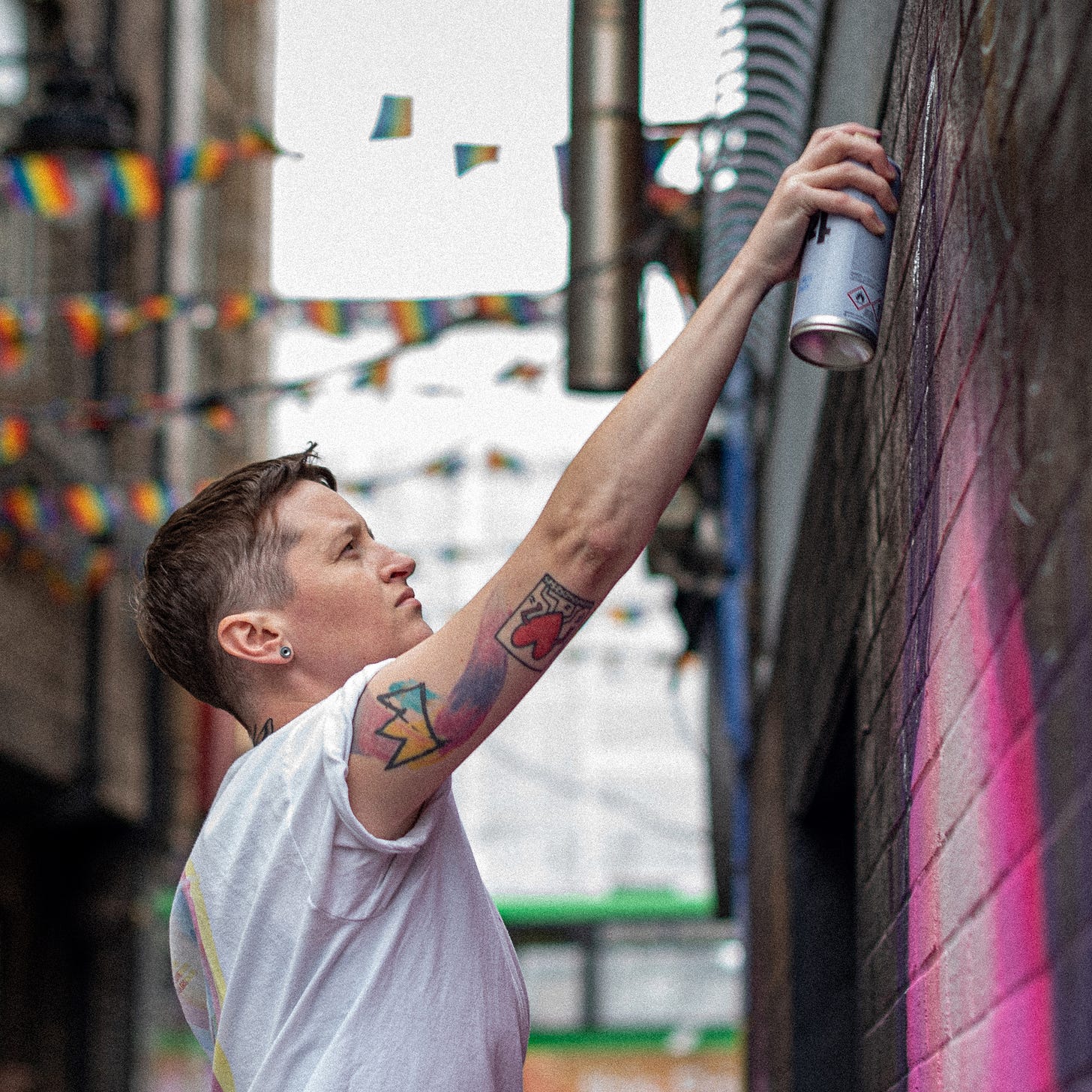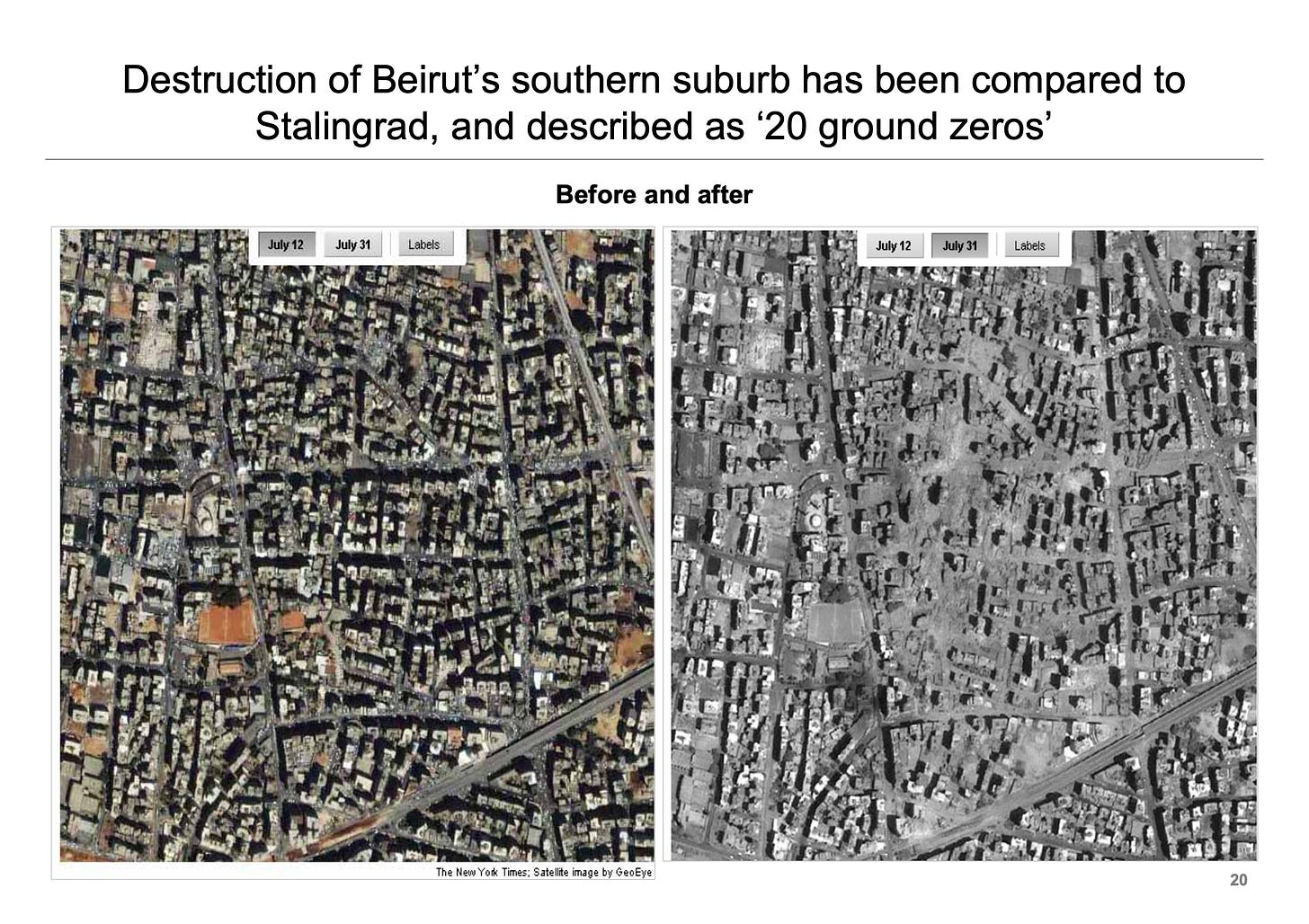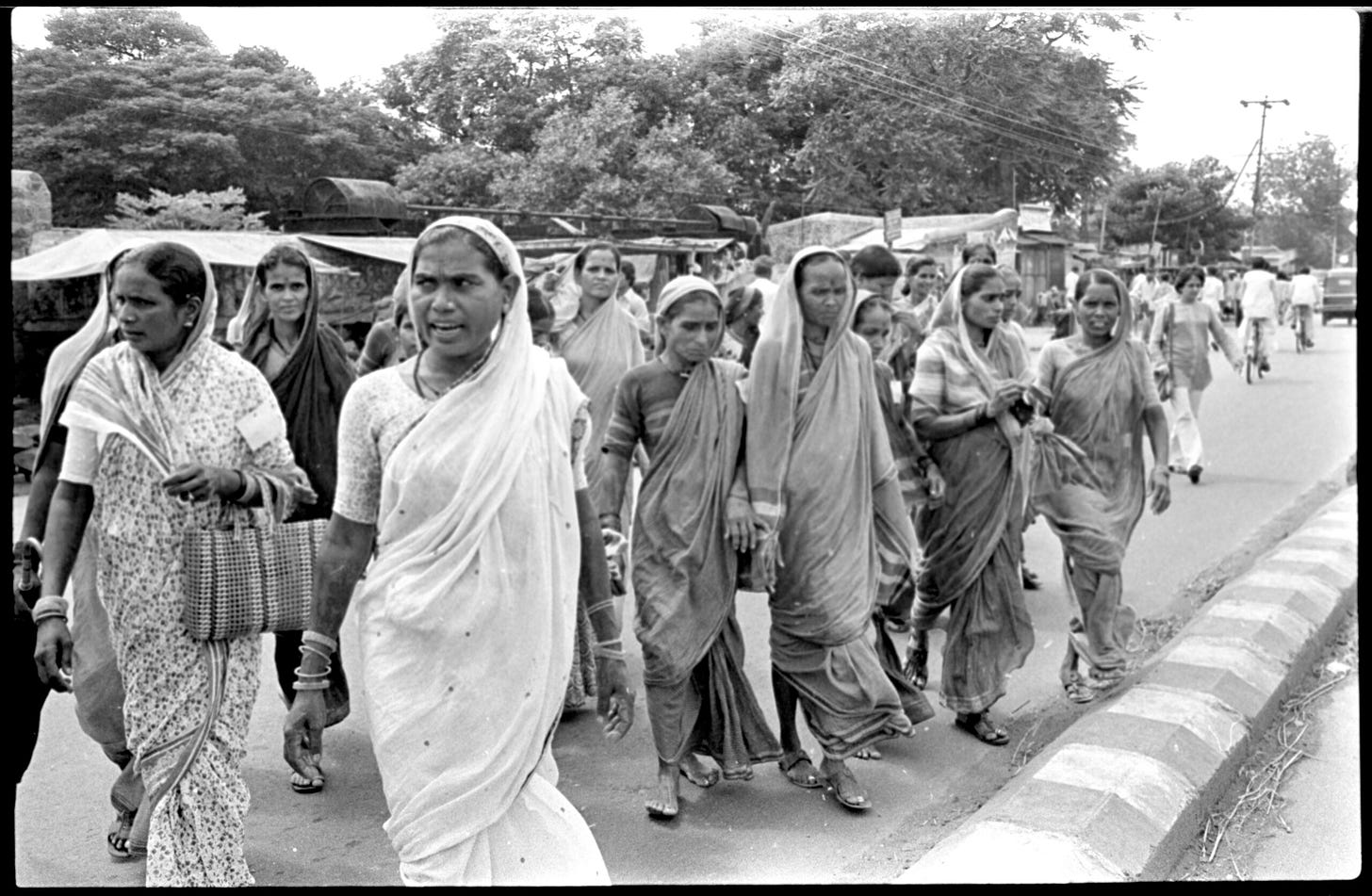Drumrolls for Our NEW Culture Section! - with our column 'Re/Orient' by Ruby Hamad, Maryam Ahmad on the memefication of Kamala Harris and 'The Coconut Empire' by Bhakti Shringarpure
+ our weekly podcast 'Its Not You, Its The Media',Sherry Zane’s interview with mural artist Emmalene Blake, Toufoul Abu-Hodeib's “The Gaza Doctrine”, Aditya Shrikrishna on the Yugantar Film Collective
Dear Readers,
My name is Madhuri Sastry, and I’m a member of the Polis editorial board. It gives me immense pleasure to finally, officially, launch The Polis Project’s new culture section.
Our culture section is a labor of love, and rooted in the belief that culture is political. Culture writing has either been dismissed as frivolous—banal, gossipy, celebrity-focused; or has been co-opted and wielded by the state and mainstream media to shape public opinion in a ruthless pursuit of their own self-interests.
For decades, media empires have told us how to engage with art. They tell us who and how to read. They pompously anoint the Next Big Artist. The Voice of our Generation. The New Picasso. They regard themselves as consummate arbiters of taste, and position themselves as “neutral”, disregarding art and artists that don’t neatly slot into the narrow tracts they have carved out and designated as Good Art.
Most perniciously, from these lofty positions, these media empires and their footsoldiers dismiss art, artists, and points of view that threaten their own sense of safety and power.
Nowhere has this been more apparent than in the media’s enabling of the genocide in Palestine. For over a year now, the racist mainstream media has dehumanized Palestinians, blatantly lying and gaslighting us into consenting to Israel’s ethnic cleansing. So effective have their efforts been, that even the word “genocide” is verboten in the United States.
All this in the face of the Palestinians live streaming their own genocide. Witnessing is unbearable, and the pain of the Palestinians, the Lebanese, and other colonized people around the world too immense to even begin to hold. We stand by them, wholly, unequivocally, and always.
We asked ourselves at Polis if this was the right time for our new endeavor. We answered in the affirmative because we must create narratives of resistance. No matter the erasure, no matter the dismissal, we must continue the work of documenting communities of resistance—their culture, their stories, their people. We must center voices that have been silenced, and viewpoints that have been discarded as “too radical”. We must unmask. We must dethrone. We must resist.
This is what we attempt to do in our weekly Podcast, “It’s Not You, It’s the Media,” which I co-host with Bhakti Shringarpure and Suchitra Vijayan. In this media indictment, we examine how not to report on our world—from Kamala Harris, to sexual violence and children–offer moral clarity, and set the record straight. In our latest episode, we talk about how book reviews can be disingenuous and hollow, disavowing political ideas that challenge American liberalism’s sanitized narratives. Find us on Apple, Spotify, and wherever you get your podcasts.
Magazines like Polis have been relegated to the fringe because that is where the media empire wants us: off to the sides, caricatured as rabid, radical, ragtag, “snowflakes”. “Clowns to the left of me, jokers to the right,” they say from their pedestals of faux-neutrality.
But they do not want to engage with what we actually say and stand for. Because we see through them—how they wield and weaponize language to cement their control and evade accountability.
And so, we write and we photograph, we video and share stories and songs. Because we are irreverent of their power.
We write as the mainstream, because we are the mainstream.
To that end, in her monthly column, Re/Orient, Ruby Hamad will document how this moment of “unwavering resistance in the face of overpowering violence” signals a moment of political awakening-one of re-orientation away from Western cultural and political hegemony. Her second column examines how a vote for Jill Stein is an act of hope and change, a chance to imagine a future different from the two-(effectively conservative)-party system in the United States.
With the American Presidential election around the corner, Maryam Ahmad questions whether the cringeworthy memes of Kamala Harris—her campaign’s sordid attempt to speak GenZ’s language—has actually impacted their perception of her, and more importantly, their desire to vote for her—especially given the many crises they find themselves shouldering, from gun violence to climate change.
In Sherry Zane’s interview with the mural artist Emmalene Blake, they discuss the impact of Blake’s street art on Palestine, and their fundraising efforts– how individuals have had to step in to raise mutual aid for Palestinians while their governments and media enable the carnage to unfold.
Toufoul Abu-Hodeib writes heartbreakingly of how this carnage in Gaza has carried new levels of brutality—and how it is now perpetrated by Israel in Lebanon. In “The Gaza Doctrine”, Abu-Hodeib describes how “individuals have now become time bombs that can explode at any moment, regardless of the other human lives they take with them.”
In “The Coconut Empire”, Bhakti Shringarpure examines the insidious, and lingering effects of Mindy Kaling’s sitcoms and dramas. Shringarpure methodically unpacks how Kaling’s characters have created the prototype of an Indian American woman who aspires to whiteness—from a disregard of their own histories to mining them for cheap jokes, to being obsessed with white men. They are brown on the outside and white on the inside and no one is immune—not even Chitti-in-chief-to-be.
A still from Molkarin (Maid Servant). (Photograph by Navroze Contractor).
And then in India, Aditya Shrikrishna writes about the enduring legacy of the radical feminist documentary film collective, Yugantar, using two scenes in the recent documentary “No City for Women” to launch his analysis. Formed in 1980, the independent collective created “four important films that inspected fundamental fractures in Indian society, in which the subject-protagonists in front of the camera and the filmmaker-activists behind it were equal participants in a solidarity-building exercise,” he writes.
In the months to come, we will continue to bring you reviews of films, books from outside the corridors of power, stories about places of collective resistance from Italy to India, and conversations with writers and thinkers who shape our world.
Join us.









